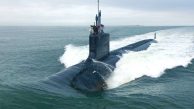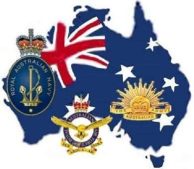
U.S. Air Force B-1B Lancer Bombers in Indo-Pacific: Enhancing Regional Stability
Stars & Stripes
The U.S. Air Force’s deployment of B-1B Lancer bombers to Guam underscores its commitment to bolstering the rules-based international order in the Indo-Pacific. These deployments, part of Pacific Air Forces’ (PACAF) Bomber Task Force (BTF) operations, demonstrate operational readiness, reinforce strategic deterrence, and enhance cooperation with regional allies.
The Indo-Pacific region’s growing security challenges, including threats from China’s military expansion and North Korea’s missile programs, make it a focal point of U.S. defence strategy. As a key hub for BTF operations, Guam offers a strategic location that enables rapid power projection and extended operational reach, ensuring the U.S. can address security challenges across the region’s vast expanse.
The B-1B Lancer, originally designed for high-speed, low-level missions, has evolved into a versatile, long-range strategic bomber. Its capabilities include carrying a wide range of munitions—from Joint Direct Attack Munitions (JDAMs) to precision-guided missiles. The aircraft’s variable-sweep wing design allows speeds of up to Mach 1.2 at low altitudes, enabling it to evade radar systems and strike targets with precision. With a payload capacity of 34,000 kg (75,000 pounds), the B-1B offers unmatched flexibility in mission planning and execution.
The B-1B’s range of approximately 9,260 km (5,000 nautical miles) with aerial refuelling makes it ideally suited for operations in the Indo-Pacific. Its ability to integrate with fighter jets, surveillance aircraft, and refuelling tankers enhances the U.S.’s capability to conduct sustained operations. These deployments not only showcase U.S. airpower but also strengthen interoperability with regional allies like Japan, South Korea, and Australia.
BTF operations highlight the importance of joint and allied missions. By integrating U.S. Navy, Army, and allied forces, these exercises ensure coordinated, large-scale responses to potential threats. This unified approach strengthens the collective deterrence posture and sends a clear message to adversaries about the U.S.’s readiness and resolve.
Beyond military readiness, these deployments serve broader strategic goals. They ensure freedom of navigation, protect vital sea lanes, and uphold stability in a region critical to global trade and security. Cooperation with regional partners reinforces the collective ability to counter emerging threats and respond effectively to crises.
The deployment of B-1B Lancers to Guam as part of PACAF’s training exercises demonstrates the U.S. Air Force’s commitment to maintaining peace and stability in the Indo-Pacific. With advanced capabilities and strategic partnerships, the U.S. continues to project strength and uphold the principles of a rules-based international order in one of the world’s most critical regions.



